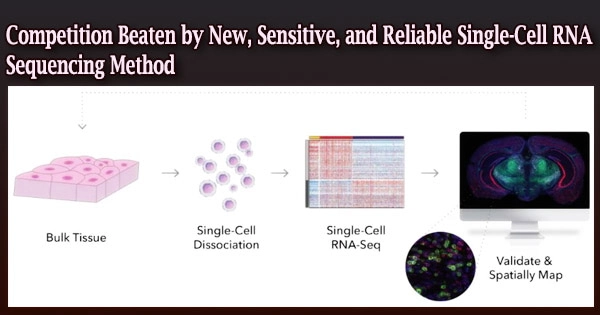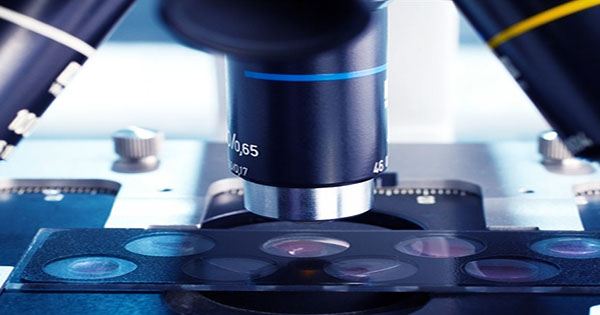With the development of single-cell RNA sequencing (scRNA-seq), it is now possible to analyze the internal workings of hundreds of cells at once, revolutionizing the areas of biology and medicine.
However, the limitations of scRNA-seq techniques include the potential for inaccurate cell composition analysis and ineffective complementary DNA (cDNA) amplification, which is the process by which a double-stranded DNA that “complements” the single-stranded RNA is produced and replicated millions of times by the widely-used template-switching reaction.
A novel and better method for scRNA-seq has just been created by a research team from Japan, lead by Assistant Professor Shigeyuki Shichino and Professor Kouji Matsushima of Tokyo University of Science.
Compared to current, widely-used technologies, the new technique, terminator-assisted solid-phase cDNA amplification and sequencing (TAS-Seq), uses less complicated materials and equipment to produce higher-precision scRNA-seq data.
“Our technique, TAS-Seq, combines genetic detection sensitivity, robustness of reaction efficiency, and accuracy of cellular composition to enable us to capture important cellular information,” reveals Assistant Prof. Shichino.
On June 27, 2022, the study was published in Communications Biology. Associate Professor Satoshi Ueha from Tokyo University of Science, Professor Taka-aki Sato from the University of Tsukuba, and Professor Shinichi Hashimoto from the Wakayama Medical University were also members of the research team.
We found that TAS-Seq may outperform 10X Chromium V2 and Smart-seq2 in terms of gene detection sensitivity and gene drop-out rates, indicating that TAS-Seq might be one of the most sensitive high-throughput scRNA methods. We can detect genes across a wide range of expression levels more uniformly and also detect growth factor and interleukin genes more robustly.
Assistant Professor Shigeyuki Shichino
Terminal transferase is a template-independent enzyme used by TAS-Seq to amp up cDNA (TdT). However, TdT is challenging to manage. Dideoxynucleotide phosphate (ddNTP) was used by the study team as a “terminator” for the cDNA amplification step in order to overcome this difficulty.
“ddNTP spike-in, specifically dideoxycytidine phosphate (ddCTP), stops the excessive extension of polyN-tail by TdT in a stochastic manner, and greatly reduces the technical difficulties of the TdT reaction,” explains Assistant Prof. Shichino.
The nanowell/bead-based scRNA-seq platform used by TAS-Seq additionally enables the isolation of single cells from tissue samples, reducing cell sampling bias and enhancing the precision of cell composition data.
Using samples of murine and human lung tissue, the study team next confirmed the effectiveness of TAS-Seq and evaluated it against two popular, contemporary scRNA-seq methodologies, 10X Chromium V2 and Smart-seq2. When compared to the most popular scRNA-seq technologies, they discovered that TAS-Seq could not only detect more genes overall but also find more highly variable genes.
Assistant Prof. Shichino says, “We found that TAS-Seq may outperform 10X Chromium V2 and Smart-seq2 in terms of gene detection sensitivity and gene drop-out rates, indicating that TAS-Seq might be one of the most sensitive high-throughput scRNA methods. We can detect genes across a wide range of expression levels more uniformly and also detect growth factor and interleukin genes more robustly.”
The new technique also has the benefit of TAS-Seq being less prone to batch effects. The fact that TAS-Seq data and flow-cytometric data from the tissue samples had a strong correlation further suggests that TAS-Seq can produce extremely precise cell composition data.
Speaking on the future, Assistant Prof. Shichino reveals, “We have already completed development of TAS-Seq2, an improved, extensively-optimized version of TAS-Seq. TAS-Seq2 has 1.5 to 2 times more sensitive gene detection in mouse spleen cells.”
In order to offer scRNA-seq services using TAS-Seq and TAS-Seq2, the research team has also founded ImmunoGenetics, a venture firm from Tokyo University of Science.
For scientists working in medicine and biology, scRNA-seq is a crucial tool. The creation of TAS-Seq and TAS-Seq2 will progress the study of “spatial transcriptomics,” which also depends on solid-phase cDNA synthesis, and lead to the identification of novel therapeutic targets for illnesses.
Additionally, it will hasten the advancement of single-cell omics technologies, advancing our comprehension of the biological underpinnings of illness onset and progression.
















